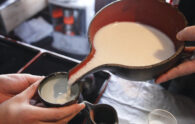Every year from July to August, Japan becomes alive with summer festivals of all different scales and sizes. The summer festivals of the Tohoku region (home to Iwate and the ILC candidate site) are some of the most dynamic and fun festivals you’ll find here, with many of them open for onlookers to participate. However, the vast majority of these festivals have been cancelled this year due to COVID-19.
That’s why I’d like to share with you a more “reserved” festival of the Tohoku region called the Sendai Tanabata Festival. Let’s wish upon a star for peace around the world.
What’s Tanabata?
The word Tanabata is originally from Chinese, and comes from a legend that’s shared throughout eastern Asia.
Simply put, the legend goes like this.
① A long long time ago, there lived a princess called Orihime (the star Vega) and a shepherd named Hikoboshi (the star Altair).
② Eventually the two were brought together by the gods to be married. These two, who were once hard workers, all of sudden started to play around all day and stop working.
③ The gods, angered at this, decided to create the Milky Way Galaxy to separate the two, putting Orihime to the west, and Hikoboshi to the west. (Note: The Milky Way is typically written in Japanese as “the River of the Heavens”)
④ To mend their broken hearts, the two started working hard again. They were allowed to meet each other once a year, crossing over the Milky Way. This day (July 7th) is called Tanabata.
Sendai Tanabata – a summer festival of Tohoku
Festivals are held all over the place in the Tohoku region of Japan from the end of July to the beginning of August. The largest festivals have millions of people participating. Each festival has its own origin story, but in Tohoku, long known as an agricultural region, many of these festivals are held to pray for a good harvest.
In Iwate, we have things like the Morioka Sansa Odori Festival and the Sominsai Festival right by the Kitakami site for the ILC. These are wonderful festivals but I’d like to share them at another time.
Now, in Sendai, we don’t hold the Tanabata festival on July 7th, but on August 6-8 instead. In central Sendai, local commerce areas make their own Tanabata decorations to decorate the areas outside their stores, and many people come to see these every year.
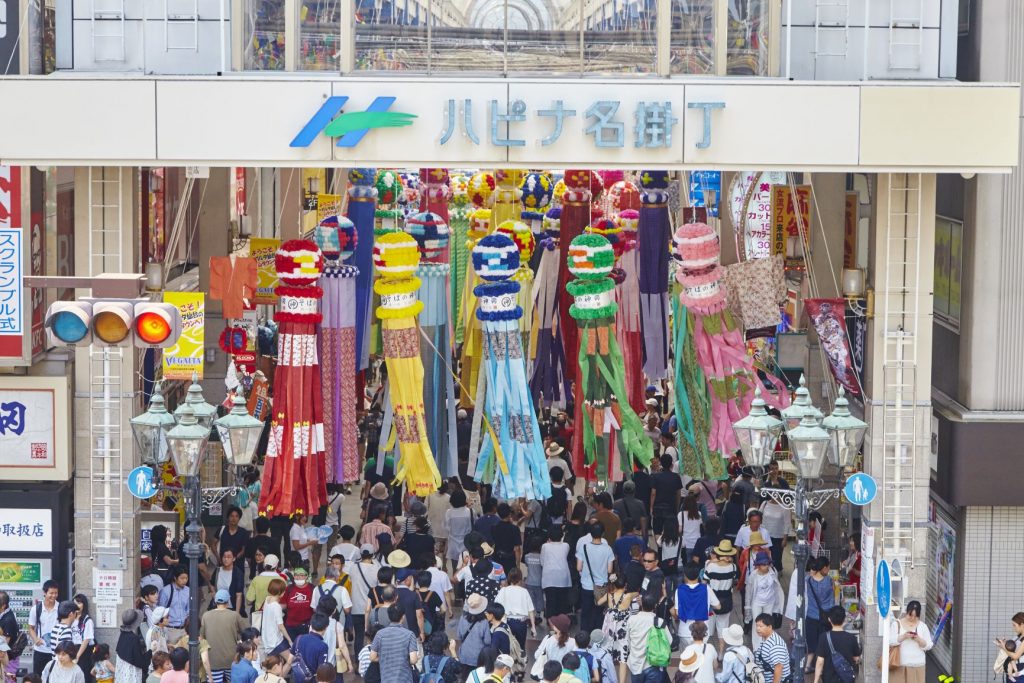
These long streamers, called Fukinagashi, are some of the most famous decorations of Tanabata. Around 2 million people visit from August 6-8.
What do we do during Tanabata?
The Sendai Tanabata Festival is closely associated with the long dangling Fukinagashi streamers, but there seven different types of Tanabata decorations, each with their own meaning. It would take me until tomorrow to explain them all, so I’ll just share with you the most famous decoration, the tanzaku.
During Tanabata in Japan, people write their wishes on these small pieces of paper called tanzaku, and then they hang them from a branch of bamboo grass. They say it started when people started writing things like “I want to get better handwriting,” and “I want to be better at studying.” It’s believed that Orihime and Hikoboshi are the ones to make your wishes come true.
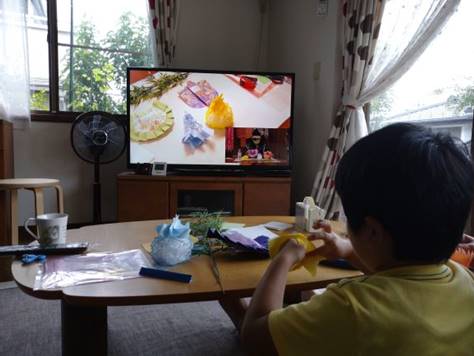
My son, who’s in third grade, has made seven different Tanabata decorations with his online classes.
This year’s Sendai Tanabata
In 2011, when the Great East Japan Earthquake and Tsunami struck, summer festivals were still held throughout the land in order to cheer on the people of the affected areas, and give them strength so they could rebuild. However, this year almost all the summer festivals of Japan have been cancelled due to the spread of COVID-19. Sendai Tanabata is also cancelled. It is so sad that we won’t be able to look forward to the flutes, taiko drums, dancing, and all the other excitement of summer festivals.
However, Tanabata has always been an event for wishes and prayers. Even if the festival itself is cancelled, we can still write our wishes down from our homes, businesses, and schools. Even if it’s small, we can wish for the end of COVID-19 and anything else our heart desires. The site below is looking for people to submit their wishes online so that anyone can still take part in writing tanzaku. If you’re interested in trying to be a part of the Japanese Tanabata festival, you can visit the site below. It’s until August 8th!
(Translation of the red text on the above image)
They will write down your wishes on tanzaku and put it up for you.
①Select your tanzaku color/background.
② Write your wish in the box.
③ Write your name in the box below, and hit the green button to submit.
Japanese
When You Wish Upon A Star, TANABATA Festival毎年7月から8月にかけて、日本各地で大小様々な夏祭りが行われます。ILC候補地の東北地域の夏祭りは、観客参加型のダイナミックで楽しい祭りが多いのが特徴ですが、今年は、新型コロナウイルスの影響でほとんど全ての夏祭りが中止となりました。
今回は、東北夏祭りの中でも、特に穏やかな印象があり、星に祈りを込める風習がある「仙台七夕まつり」をご紹介します。皆さんで、世界の平和を祈りしましょう。
七夕(TANABATAとは)?
七夕(TANABATA)は中国が起源で、東アジアに広く伝わり日本でも有名になった伝説です。
ざっくり言うとこんなお話です。
①むかしむかし、あるところに機織りが上手な織姫(ベガ)、牛飼いの彦星(アルタイル)がいました。
②やがて二人は神様のお導きで結婚しましたが、今まで働き者だった2人は急に遊んで暮らすようになり、全く働かなくなってしまいました。
③怒った神様は、2人の間に天の川を作り、織姫(ベガ)は天の川の西に、彦星(アルタイル)東に、引き離しました。
④それから2人は心を入れ替えて一生懸命働くようになりました。1年に1度だけ天の川を渡って会うことが許されるようになり、その日が七夕(7月7日)です。
【写真】
ベガとアルタイル、二人を引き裂くように、天の川が横たわっているでしょ?
東北のサマーフェスティバル、仙台七夕
ILCの候補地・日本東北では、7月末~8月上旬にかけて、各地で一斉に夏祭りが行われます。大きいものは数百万人が参加します。夏祭りの由来は祭りごとに異なりますが、農業地帯の東北では、作物の成長を祈るケースが多いようです。
岩手には盛岡さんさ踊りはもちろん、北上サイトには「蘇民祭」という素晴らしいお祭りがありますが、その紹介はまたの機会に取っておきたいと思います。
さて、ここ仙台では7月7日ではなく、いろいろ事情があって伝統的に8月6日~8日に「仙台七夕まつり」が行われます。仙台市中心部では、商店街の企業が自慢の七夕飾りを作って店の前に飾りつけ、毎年たくさんの人がそれを見に訪れます。
【写真】
七夕飾りを象徴する豪華な「ふきながし」は特に目を引き、8/6-8/8の3日間で200万人が訪れます。
本来の七夕まつりとは
このように、仙台七夕は「ふきながし」のイメージが定着しているのですが、本来、七夕は7種類の飾りがあり、それぞれに意味があります。全部説明すると明日になるので、ここでは最も有名な「短冊」についてご紹介しましょう。
日本では、七夕に合わせて、短冊に「お願いごと」を書き、笹の葉に吊るす習慣があります。もともとは、字が上手になりたい、勉強ができるようになりたいと、お願いごとをしたのが始まりのようです。織姫と彦星が願いをかなえてくれると信じられています。
【写真】
世界平和を祈る人もいれば、将来なりたい職業を書く人もいれば。人それぞれの願い事を書きます。
【写真】
我が家でも、小学校3年生の息子が、オンライン講習会を通じて、7種類の飾りを作りました。
今年の仙台七夕まつり
東日本大震災が発生した2011年も、夏祭りは各地で開催され、被災した人々を励まし、復興の力となってきました。ところが、今年は、新型コロナウイルス感染症の影響で、日本のほとんど全ての夏祭りが中止となりました。仙台七夕まつりも中止です。今年は、笛や太鼓、踊りの練習といった、祭りに向けたワクワク感、活気を味わうことができず、本当に残念です。
ただ、七夕はもともと願いや祈りの行事です。祭りは中止になりましたが、家庭やお店、学校では、コロナ禍の収束をはじめとした思い思いの願いを込めて、ささやかな飾りづくりに励んでいます。仙台七夕まつりでは、誰でも「短冊」に願いを書いて願い事ができるよう、インターネット上で願い事を募集しています。ぜひ、皆さんも短冊に願いを書いて、日本の七夕を味わってみませんか?応募は下記のサイトから、8月8日までです!
https://wish.tanabata.fun/
【イメージ】

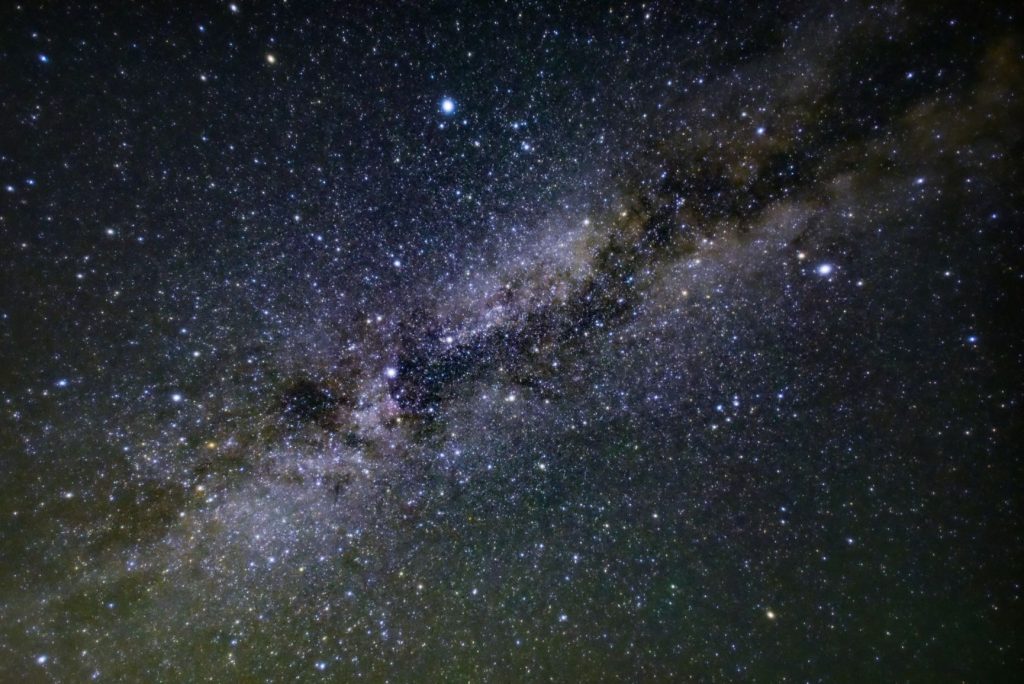
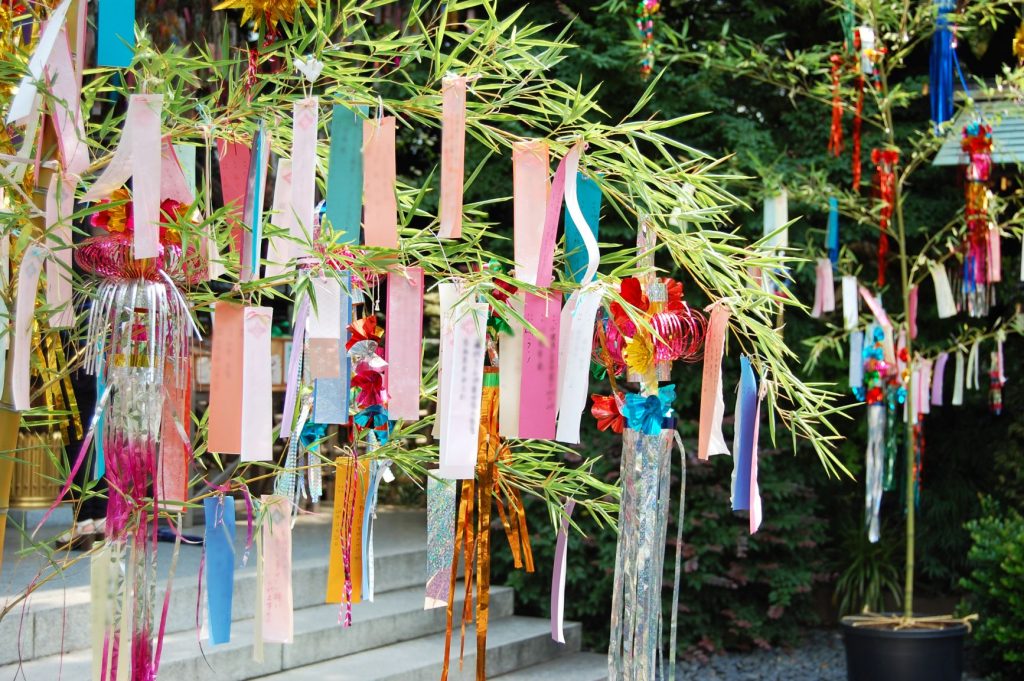
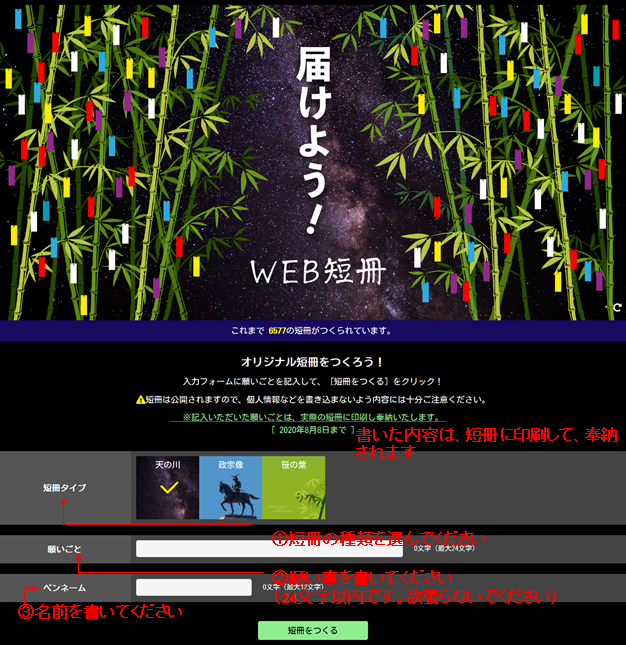

-195x124.jpg)
